Robert Bissell: "Bears" Thinking About!
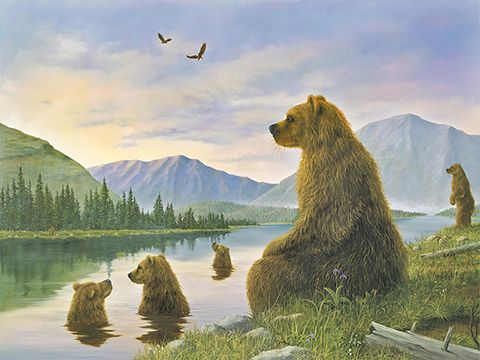
Robert Bissell's paintings of animals in allegorical interpretations of imagined narratives are enchanting and so engaging. I want to absorb all the features that Robert has combined into a landscape that in many ways resembles a children's picture book.
But there is a dichotomy in all of Robert Bissell's paintings featuring animals:
at first the paintings appear as anthropomorphic where animals have taken on human qualities; but when you start examining the compositions you realise that they explore zoomorphism — portraying humans as non-humans.
Bissell invites us as viewers to rediscover the magic in nature, and through it our own nature. His approach draws us as viewers further into his paintings and immerses us in the scenes, almost as if we are in the paintings alongside the animals. Bissell says that his stated intent is to “…show a world that is a mirror for self-definition. I am inviting the viewer to step inside a venerated space”. 1
And that venerated space is our world. The bears below are observers of what is happening.
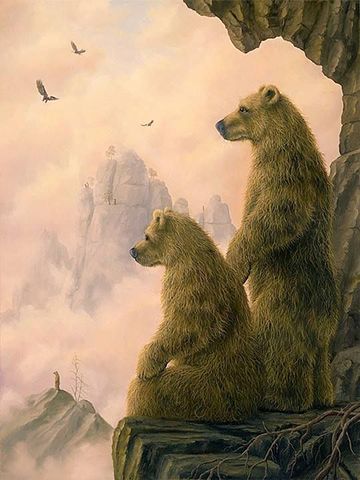
Robert Bissell grew up on a farm in Somerset, England, where animals, Celtic legends and panoramic landscapes were part of his daily life. His keen interest in visuals began at an early age, documenting life through his photography practice.
Bissell studied at the Manchester Art College and the Royal College of Art in London. Bissell then spent four years traveling the world, working on cruise ships to pay his way. For the next 15 years he worked as an advertising photographer and creative director in San Francisco. After burning out in the advertising business he began to paint for himself, exploring the local landscape and introducing animals into allegorical interpretations of his imagined narratives. More recently he has been painting realist landscapes in oils based on his own photography. 1
You will see some of Robert's realistic landscapes in tomorrow's post. In the meantime meet The Four a 16"x 12"oil on wood panel.
Robert Bissell explains:
I am not sure why this title popped into my head but I had been reading about the Buddha's four noble truths recently, so that may be it — Dukkha, Samudaya, Nirdha and Magga. In any case, I like to think these four were out travelling one night when we meet them and we are challenged to know our own truth. 3
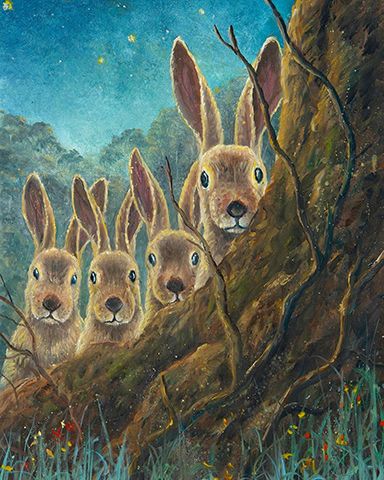
Back with the Bissell Bears we find Robert has created a visual narrative around the theme of substance transition - where one form is altered to another form.
The bears (below) are transformed from Ionisation, to Sublimation to arrive at Fusion.
As with all of Bissell's animal narratives they are multi-level. For me, with my limited knowledge of both science and philisophy, the bear is transforming from one state of being into another. We can imagine what each state might be like, why the bear has deliberately or otherwise transformed, and what the consequences of this transformation might be. I can see from the images that Phase Two - the sublimation phase - is not as dramatic a change as Phase One and Phase Three - the bear's essence remains and only the form changes in some way.
What is your interpretation of these paintings - please send in any ideas to [email protected].
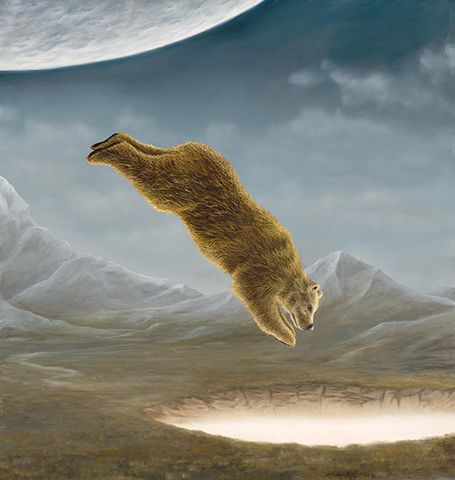
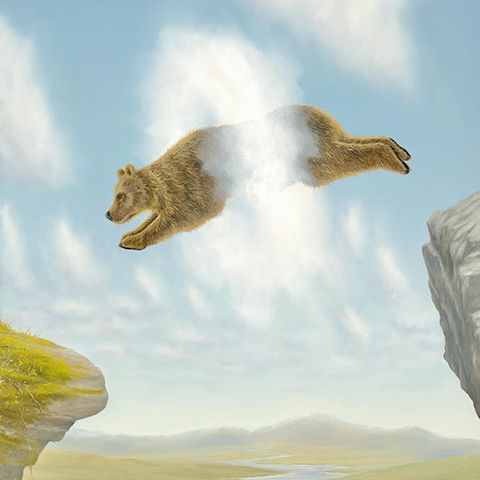
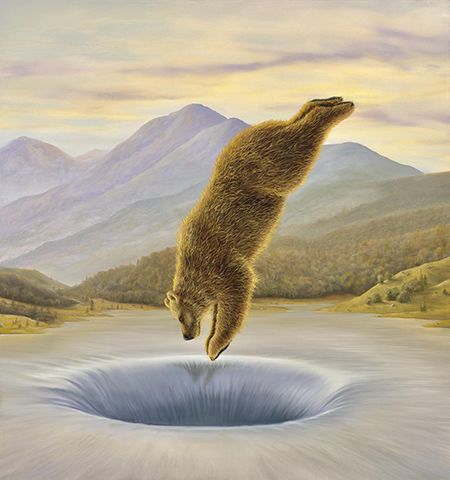
Many of the paintings by Robert Bissell contains butterflies - lots of butterflies and often the animals are standing, gazing upwards, mesmerized by the butterflies - taking the animals and human viewers into another world away from the present reality.
The Golden Hour (left below) is an oil painting and features bears surrounded by enchanting butterflies in the woods, and a setting sunset highlighting the mountain vistas.
Robert Bissell describes the painting in this way:
Towards the end of a beautiful day, when our world becomes bathed in a golden light, we can pause at the threshold where increasing darkness will fold the day's experience into night. All becomes silent as the twilight presence of our world displays its detail and radiance. It is at this moment our souls are drawn towards the setting sun to merge and finally accept the inheritance of darkness. Here we can once again be one with the cradle of origin whose mysteries will arise at dawn. - Robert Bissel 4
And of The Dancers (below right) Robert Bissell says:
Joy often reveals itself to us spontaneously. It was at such a time that I felt the desire to jump up and dance for joy. No particular reason, just that joy was there and it wanted expression. This is the inspiration for this painting. I first saw dancing bears at a circus in Odessa, Georgia. Although they had obviously been trained, the sense I got from them was that even though they may be not in a place they felt at home; they were for a period of time, able to allow the energy of the fun and dance to come through them. We all joined in and laughed like crazy, at first at the sight of them but then just because we wanted to! It reminds me that even in difficult times there can be room to jump, skip and dance down our own path. - Robert Bissell 4
If you like hidden animals there are a couple of rabbits in The Dancers which you can see better in the video below.
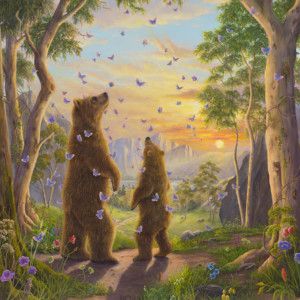
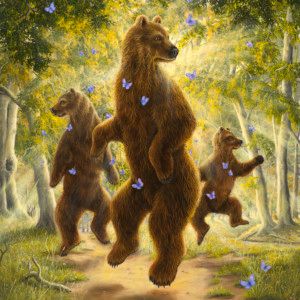
And if you would like to be reminded that even in difficult times there can be room to jump, skip and dance down our own path please view the video below which takes about 6 minutes.
Here on the AnArt4Life blog we have done two previous posts on Robert Bissell's animal narrative paintings - the bookmark links are given below.
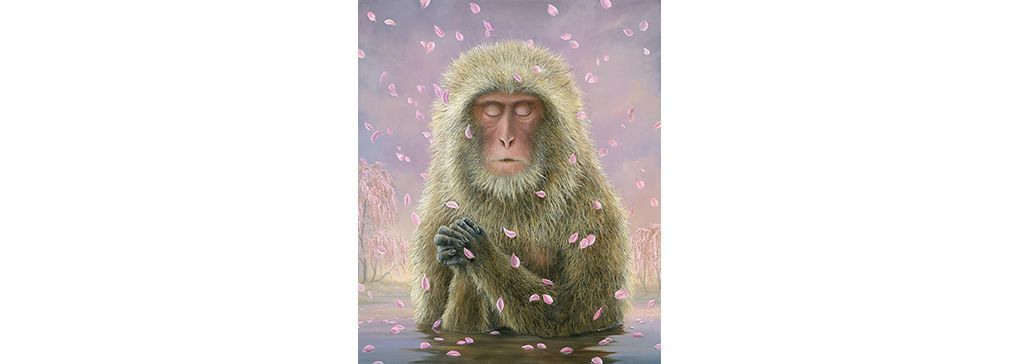
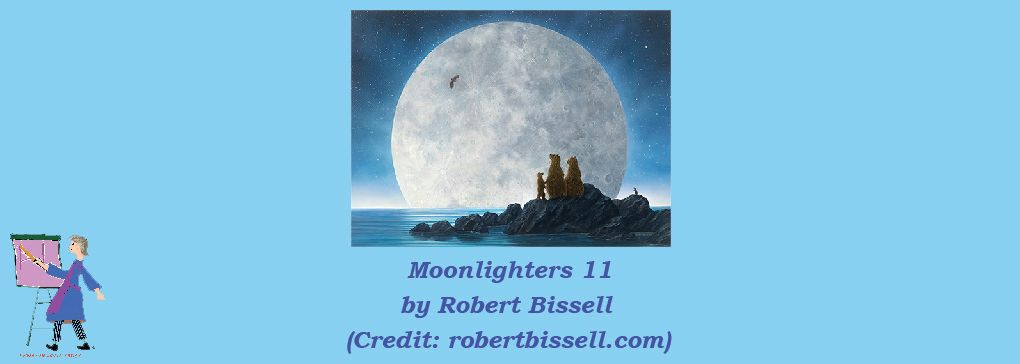
And please check out Robert Bissell's website by following the Bookmark link below.

Credits
1. robertbissell.com
2. pinterest.com.au
3. facebook.com/robertbissellart
4. jacobgallery.com/
5. borsini-burr.com


